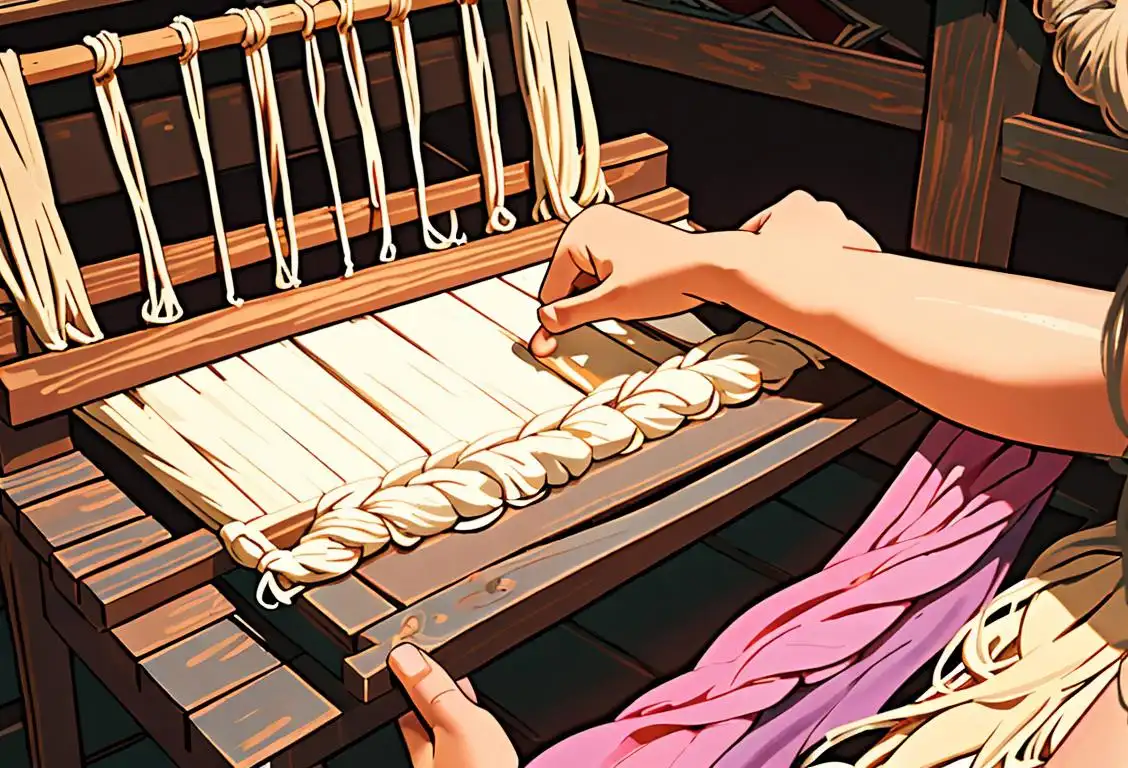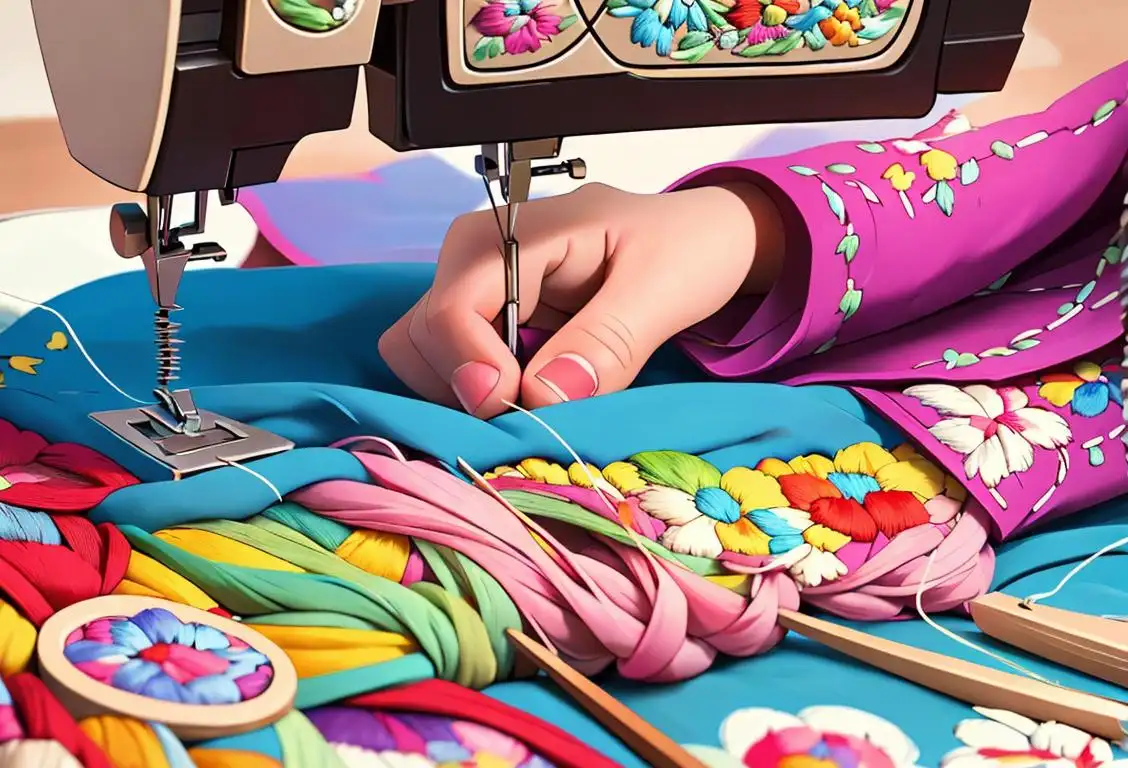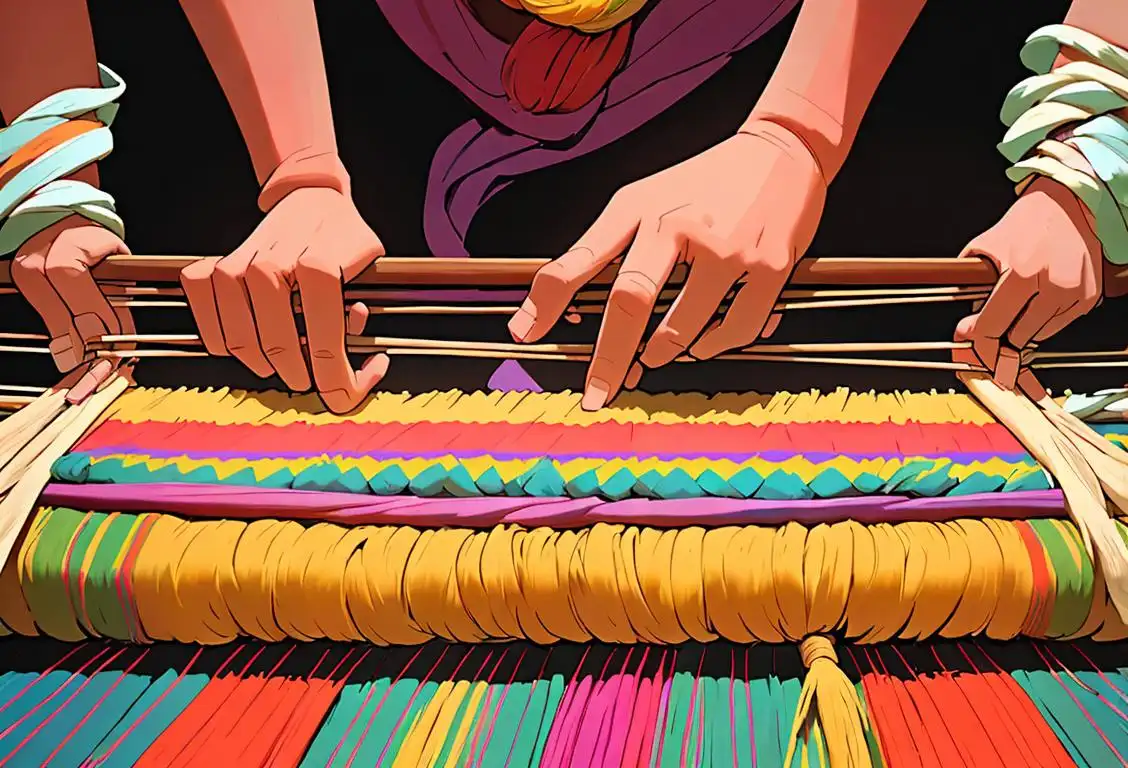National Hand Loom Day

Hey there, loom lovers! It's time to celebrate National Hand Loom Day, a special occasion dedicated to these remarkable weaving machines. Whether you're a crafts enthusiast or just enjoy the cozy comfort of hand-loomed fabrics, this day is for you. So, sit back, relax, and let's delve into the fascinating world of hand looms!
When is Hand Loom Day?
It's national hand loom day on the 7th August.
A Brief History of Hand Looms
Hand looms have been around for centuries, helping humans turn threads into beautiful textiles. The origins of hand looms can be traced back to ancient civilizations like Egypt, Mesopotamia, and China. These early looms were simple devices made of wood or reeds, but they laid the foundation for the intricate and advanced looms we have today.
Throughout history, hand looms played a vital role in the textile industry, supporting local economies and preserving cultural traditions. They allowed artisans to create intricate patterns and designs, adding a touch of artistry to everyday fabrics. From delicate silks to coarse woolens, hand-loomed textiles have graced the wardrobes and homes of people worldwide.
Bringing Hand Looms into the Digital Age
In the age of automation and mass production, hand looms have faced new challenges. However, they are far from extinct. In fact, they have undergone a renaissance of sorts, attracting a new generation of artisans and enthusiasts. Many people now appreciate the beauty of handcrafted goods and the connection they provide to our heritage.
Moreover, the internet has played a significant role in reviving interest in hand loom weaving. Artists and designers now have platforms to showcase their creations, while online communities offer support and inspiration. National Hand Loom Day celebrates this digital era of hand loom weaving and encourages people to explore the world of handcrafted textiles.
Why We Love Hand Looms
Hand Loom Day gives us a chance to reflect on why we adore these marvelous machines. For starters, hand looms produce unique and one-of-a-kind textiles. Each piece carries the imprint of the weaver's skill, making it truly special. The rhythmic clatter of the shuttle and the gentle hum of the loom create a soothing atmosphere—a symphony of craftsmanship.
Hand looms also contribute to sustainable fashion and conscious consumerism, as they emphasize quality over quantity. By choosing hand-loomed products, we support local artisans and promote traditional craftsmanship. Plus, hand-loomed fabrics often have a natural and organic charm that adds character to any outfit or home décor.
So, let's celebrate National Hand Loom Day by embracing the beauty and artistry of hand looms. Whether you're a weaver, a collector, or simply someone who appreciates the finer things in life, take a moment to honor the ancient craft and marvel at the wonders it creates.
History behind the term 'Hand Loom'
7000 BCE
Invention of Textile Weaving
Textile weaving is believed to have been invented around 7000 BCE in ancient civilizations such as the Neolithic era. Early forms of weaving involved manually interlacing fibers to create fabric.
5000 BCE
Development of Backstrap Loom
Around 5000 BCE, the backstrap loom was developed. This type of loom consists of a stationary frame attached to a belt worn by the weaver. By leaning back and applying tension, the weaver could create intricate patterns and designs in the fabric.
2400 BCE
Introduction of Vertical Loom
The vertical loom, also known as the warp-weighted loom, was introduced around 2400 BCE. This loom featured a tall frame with weights hanging from the warp threads to maintain tension. It revolutionized weaving by allowing the creation of larger and more complex textiles.
700 CE
Spread of the Hand Loom
By the 7th century CE, the hand loom had become a widely used tool for textile production in various regions across the world. From Asia to Europe, hand looms played a crucial role in meeting the demands for woven fabrics.
1733 CE
Industrial Revolution and Power Looms
The Industrial Revolution in the 18th century brought significant advancements in weaving technology. In 1733, English inventor John Kay developed the flying shuttle, allowing for faster weaving. This led to the rise of power looms, which automated the weaving process and greatly increased production.
19th Century
Impact of Mechanization on Hand Looms
With the widespread adoption of power looms, traditional hand looms began to decline in the 19th century. The efficiency and speed of mechanized weaving made it difficult for hand weavers to compete. However, hand looms still persisted in certain regions and for specialized weaving techniques.
Present
Revival and Artisanal Use
In recent years, there has been a renewed interest in hand looms and artisanal weaving. Hand looms are celebrated for their traditional craftsmanship and the production of unique, handcrafted textiles. Many artisans and textile enthusiasts continue to use hand looms for their artistic and cultural significance.
Did you know?
Did you know that the largest hand-loomed carpet in the world measures a whopping 60,546 square feet? It was created in Iran and took a team of 1,200 weavers over a year to complete. Now that's a massive masterpiece!Tagged
crafts textiles artisansFirst identified
7th August 2015Most mentioned on
7th August 2018Total mentions
87Other days
Hand Loom Day
Embroidery Day
Paper One Day
Textiles Day
Quilt Day
Socks Day
Tassel Day
Thread The Needle Day
Awards For Handloom Weavers On Handloom Day
Carve A Pumpkin Day








